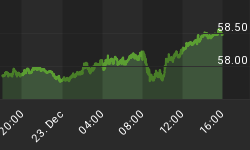A Hobson's choice is a free choice in which only one option is offered. As a person may refuse to take that option, the choice is therefore between takingthe option or not - i.e. "take it or leave it".
So how does this apply to pensions?
None other than the august PIMCO, the worlds largest (US$ 1 trillion) bond manager and home to Bill Gross, has jumped on the "pensions are in trouble" band wagon. A bit late but a welcome addition in any event. In some recent analysis they echo what our firm has been warning about since the inception of Zero Interest Rate Policies ("ZIRP") around the globe - that the value of pension fund liabilities is growing while the returns necessary to fulfill them are dwindling, leaving pension funds progressively more under-funded with eachpassing moment.
As I have written many times in the past I believe we are seeing just thevery beginning of the problems we will have to face with pension finances.
The particular area of concern is that a significant number of pensions assume annual returns in the range of 8% when they are planning how to meet their obligations. As a large portion of pension portfolios are in fixed income securities that are now yielding a fraction of that number, these return assumptions are challenging to put it mildly. It turns out that the 8% return number is just the beginning of the aggressive assumptions that pension fund managers are building into their models in order to make their plans seem whole. Pension fund managers are now implicitly assuming 11% equity returns. It goes almost without saying that this is at best wishful thinking. It seems unlikely indeed that pension fund mangers will be able to generate consistent 11% equity returns going forward when they rarely if ever generated such returns in the past. Even less likely since recent research from the Federal Reserve shows that due to baby boomer selling pressure equity returns will be below long run averagesover the next 2 decades and no where near 11%.
Given the unreasonable return assumptions, ZIRP and ongoing market losses, just how serious is the pension funding shortfall? A recent pair of US studies on municipal and state pension obligations by the Kellogg School of Management found a total funding shortfall at the municipal and state levels of around $3.5 trillion - more than the banking bail-out to date. In addition, PIMCO estimates that the recent reduction in yields brought on by the Federal Reserve's "Operation Twist" - yes that's its real name - combined with equity market declines created approximately $80 billion in new shortfalls for US corporate pensions bringing the cumulative total to over $400 billion.
I would argue that these issues of unrealistic return assumptions, ZIRP and funding shortfalls exist outside of the US pension sector as well. Do we truly believe European, UK or Canadian pension plans are in any different conditionfrom their US counterparts?
Of course, we can safely assume that retirees who have been promised benefits are going to exert powerful political pressure to be paid in full. Unfortunately, even some simple analysis should make it clear that there is unlikely to beenough cash in pension fund coffers to pay them and stay solvent.
Ultimately, benefits will have to be reduced and/or large amounts of additional capital in the form of higher contributions or newly printed bail-out monies will have to be collected. Barring this pensions may go bankrupt. Take it our leave it - Hobson's Choice.
Kind Regards















